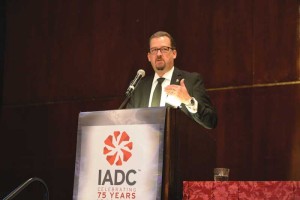Planning, assessor training essential to effective competency assurance programs

By Kelli Ainsworth, Editorial Coordinator
Extensive planning is the most crucial piece to implementing a successful competency assurance program, Mike Mathena, COO of RST Global Solutions, said on 4 February at the 2015 IADC HSE&T Conference in Houston. “By putting thoughtful planning into it, you can control from Houston how it’s going to be implemented in all the regions of the world where your company might operate,” he said. Further, before implementing a competency assurance program, companies must ensure that supervisors responsible for assessing employee competencies receive proper training and guidance themselves.
When designing a competency assurance program, companies must first identify the KPIs for each job position. Then, they must determine the most effective methods for assessing those particular competencies for the employees in that position. Oftentimes, job histories, certifications and resumes fail to reveal gaps in an employee’s knowledge and skills that a thorough assessment would bring to light. “You assess somebody, and you realize that this person really has big gaps in areas where their training is compliant,” Mr Mathena said.
Assessments should result in individualized, targeted development plans, rather than a one-size-fits-all training package. “You don’t just throw the training matrix at them. You have a very specific guided method for creating a developmental plan for that specific person,” Mr Mathena said.
Before crew competency assessments begin, supervisors who serve as assessors must receive extensive training of their own. It is crucial, Mr Mathena said, that assessors understand how to evaluate workers and how to take the results of an assessment and create individual development plans that they can oversee. “You can’t develop a developmental plan if the people doing the assessments aren’t properly trained on how to do an assessment and how to turn that outcome into a developmental effort for that individual,” he said. Assessor coaching should take place in person, on the rig, allowing supervisors to begin implementing the program while receiving guidance and feedback.
The biggest payoff of high-quality assessor training, Mr Mathena said, is that there is greater employee buy-in for the competency assurance program. With communication and coaching, supervisors and their crews understand that the program is intended to be a tool to develop their skills and enhance their career, rather than a method of identifying shortcomings and doling out punishment. “The biggest outcome by doing this properly is by the time they’re done, the crews doing the assessments want to do the assessments,” Mr Mathena said. “It removes their fears and doubts about what competency assurance is.”
Assessors should also be extensively trained on the competency assurance program’s reporting system, because competency isn’t assured “until you can report it and track it in your system,” Mr Mathena said. Reporting allows supervisors and senior management alike to track the progress of training.
Mr Mathena encouraged companies to consider seeking accreditation for their competency assurance programs from IADC, as it demonstrates value to operators. “As a company, you take pride in your program,” he said. “You want it to be accredited. You want to demonstrate the value of it.”
For more information about the IADC Competence Assurance Program, click here.




